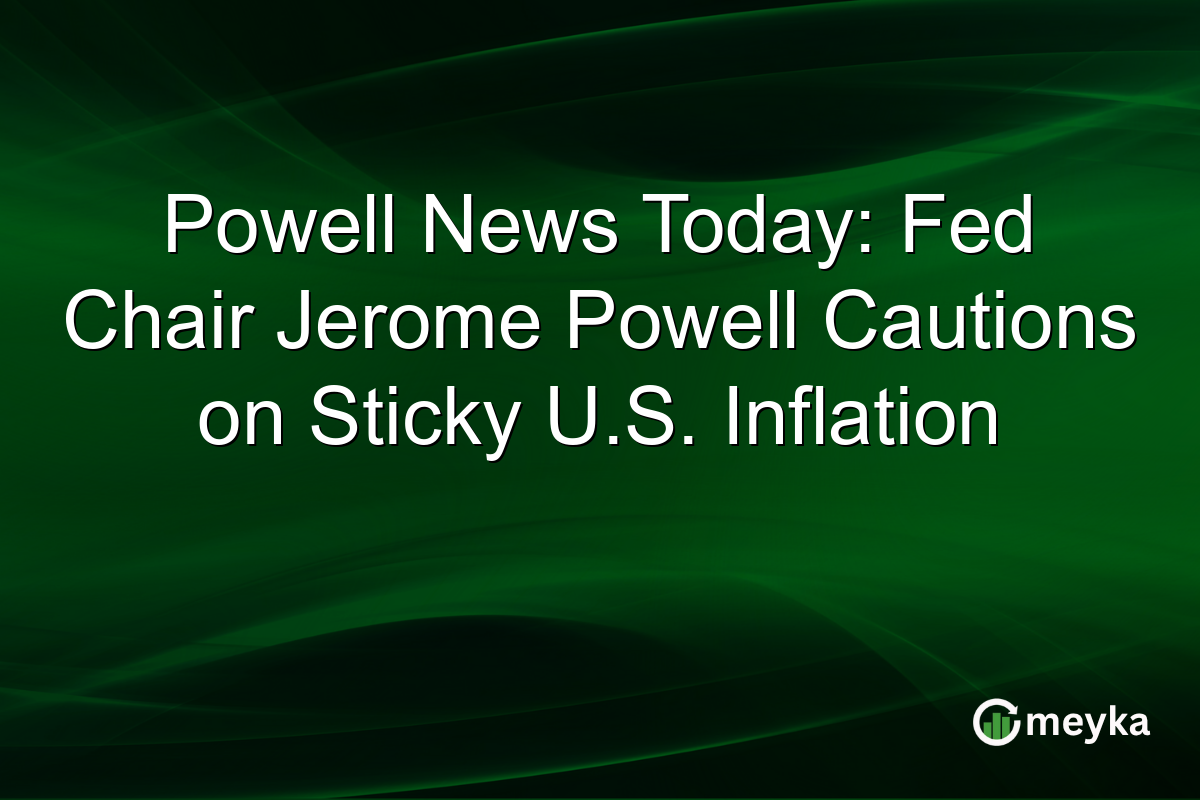Powell News Today: Fed Chair Jerome Powell Cautions on Sticky U.S. Inflation
Today, Federal Reserve Chair Jerome Powell addressed a topic weighing heavily on the minds of investors: inflation. In his speech, Powell emphasized that U.S. inflation remains higher and more persistent than expected, signaling that the central bank is not yet ready to cut interest rates. This marks a pivotal moment as markets adjust to potential longer-term monetary policy strategies. Investors are reacting, and it’s clear that Powell’s words have sent ripples through bond yields and stock markets.
Jerome Powell’s Inflation Speech
In his much-anticipated address, Powell highlighted the continued risk of “sticky” inflation affecting the U.S. economy. He noted that while some progress has been made, inflation pressures remain a concern. Critically, Powell stated that rate reductions are not anticipated soon, as the Federal Reserve seeks to uphold its dual mandate of stable prices and maximum employment. This underscores the importance of the Fed’s cautious approach to any potential policy changes. His speech, which drew attention from financial markets globally, further outlined the Fed’s commitment to monitoring economic indicators closely to gauge any shifts that might warrant action. Read more on this CNBC article.
Impact on Fed Rate Policy
Powell’s talk comes amidst market speculation about the trajectory of the Fed rate policy. With inflation proving more durable, the Federal Reserve is less inclined to consider rate cuts. This approach aligns with the central bank’s strategy to curb long-term inflationary pressures. Market participants now expect the current interest rates to hold steady, affecting both short- and long-term financial planning. Importantly, the Fed’s outlook suggests a slow and steady path toward any policy shifts, aiming to prevent overheating in the economy while maintaining economic stability.
Federal Reserve Outlook and Investor Reaction
The current Federal Reserve outlook suggests a persistent inflation vigilance. Powell’s remarks have led to a reevaluation among investors regarding future interest rate scenarios. Bond yields rose sharply following the speech, reflecting adjustments to anticipated returns. Stock markets showed volatility as investors processed the implications for earnings and growth expectations. These movements illustrate how closely tied investor sentiment is to Fed communications, particularly concerning inflation risk and monetary policy discussions. You can see related discussions on Reddit about investor reactions.
Final Thoughts
Jerome Powell’s latest remarks reinforce the Federal Reserve’s cautious stance on monetary policy amidst ongoing inflationary challenges. By maintaining current interest rates, the Fed aims to control inflation while supporting economic growth. This policy direction influences not just economists and policymakers, but also investors adjusting their portfolios to align with expected market conditions. The coming months will be crucial as the Fed monitors inflation trends and adjusts its strategies accordingly. For investors, staying informed through platforms like Meyka can provide actionable insights as the situation evolves, ensuring preparedness in a fluctuating economic landscape.
FAQs
Powell noted that U.S. inflation remains persistent and higher than expected, signaling that the Federal Reserve is cautious about lowering interest rates soon.
The speech suggests that the Federal Reserve will maintain the current rate to manage inflation, indicating no immediate rate cuts are planned. This aligns with a steady approach to monetary policy.
Bond yields increased as investors adjusted for the expectation of prolonged higher rates, while stock markets experienced volatility. These reactions reflect the market’s sensitivity to Fed communications.
Disclaimer:
This is for information only, not financial advice. Always do your research.






